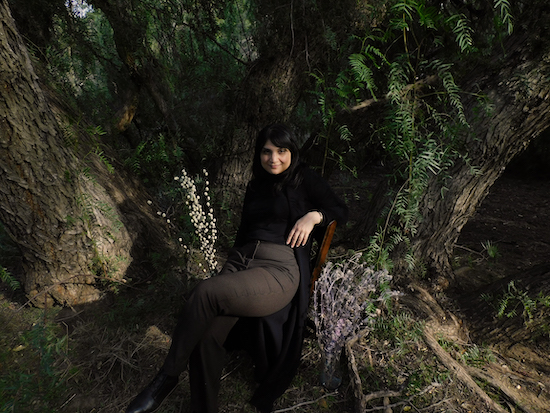Though its name suggests otherwise, "organology" – the subfield of musicology in which Sarah Davachi has enmeshed herself since beginning her PhD at UCLA in 2017 – concerns itself with the historical study of all types of instruments, not just the church-bound beasts of metal, wood, and wind that immediately come to mind. On Cantus, Descant, Davachi’s eleventh album and her first on her new label, Late Music, the experimental composer takes her audience on a ponderous tour through time and space by way of an organology of organs.
Trained as a classical pianist, Davachi’s fascination with organs began during her stint as a tour guide at Calgary’s National Music Centre, where, on quiet days, she would tool with them and marvel at their particular resonances. Though she is best known for her work with analogue synthesisers, organs appear throughout Davachi’s corpus, most notably on 2018’s ‘Waking’, a single take of her pulling sheets of translucent tones out of a Hammond. Following her explicit interest in phenomenology – Davachi once called Maurice Merleau-Ponty "the only man who has ever really understood me" – the double-length Cantus, Descant approaches organs from Husserl’s epoché, all presuppositions temporarily suspended to make way for real listening, the kind Davachi describes as "emotional or aesthetic disclosure," to begin.
The record features six such instruments sourced from across history: the Hammond in her Los Angeles Studio, a reproduction of Renaissance-era pipe organ installed in a church in Amsterdam, a 1928 E.M. Skinner pipe organ that lives in Chicago’s Rockefeller Memorial Chapel, a Vancouverian church pipe organ from 1964, a 1975 pipe organ in Copenhagen, and a 1890 reed organ at LA’s Museum Of Jurassic Technology. As organs are not known for their portability, Davachi recorded each take in situ – the first in 2017 in Vancouver, and the last in Los Angeles, in November of 2019 – and wove the final seventeen compositions together in ProTools. With nearly everyone cut off from religious or musical gatherings by the vicissitudes of the ongoing coronavirus pandemic, the resulting sonic postcards could not have arrived soon enough.
Cantus, Descant falls into place around a series of pieces titled ‘Stations I-V’, all of which feature the aforementioned 1479 pipe organ. Tuned in Renaissance meantone temperament, the archaic instrument requires two to operate. Playing while assisted by bellows pumper Hans Fridom, Davachi suspends each note in midair, allowing it to ring out and eventually drop away into the pews as others float up and softly take its place. The ‘Stations’ evoke the 1960s minimalism of La Monte Young and Catherine Christer-Hennix while remaining firmly rooted in sixteenth century harmonic structures. After their filigreed drones, the following piece, an unhurried fugue titled ‘The Pelican’, sounds as baroque as a zenned-out Bach. It is perhaps the record’s most literal illustration of the interplay Davachi seeks to unpack between "cantus" (the voice) and "descant" (its counterpoint), and one of its most charmingly direct. ‘Ruminant’ adds violin to the mix, collapsing the "Early Minimalism" of Tony Conrad with the glowing timbre of early music, while ‘Still Lives’ and ‘Oldgrowth’ wash the listener in blooming, reedy oscillations.
About halfway through Cantus, Descant, Davachi’s voice bubbles up through a field of sparse piano and Hammond organ. The first song she has written "in a traditional sense" (as Davachi puts it in the album’s press materials), the melancholy ‘Play The Ghost’ features her singing as filtered through a Leslie rotary speaker, a device she’s been enamoured with since she first heard it used as a teenage on Black Sabbath’s ‘Planet Caravan’, where its rotating baffle chamber made Ozzy Ozbourne’s vocals waver and phase.
Davachi often mentions classic rock (Led Zeppelin, Yes, Fleetwood Mac) when discussing her organological interests, noting that the analogue instruments of the period produce unstable overtones due to their inherent imperfections. There are other affinities: the title of a second sung number, the whispery ‘Canyon Walls’, evokes the Los Angeles of fellow Canadians Joni Mitchell and Neil Young, and Davachi has knowingly referred to Cantus, Descant as a "concept album," a term forever affiliated with the era. The concept, however, doesn’t derive from narrative – this is no Tommy – but from formal inquiry.
If we choose to follow Davachi down this path of organological thinking, approaching all instruments and musical technologies from the nonjudgemental epoché, genre distinctions melt away, leaving materialism in their wake. With Cantus, Descant, Davachi invites us to join her in communion with the stuff of history.


